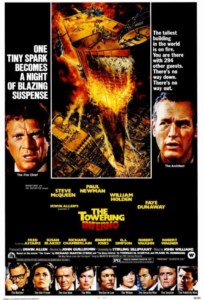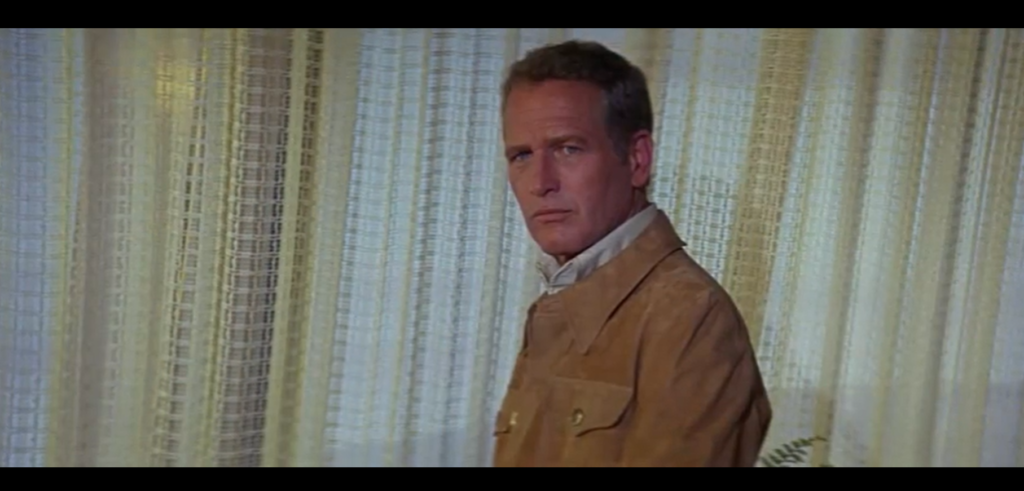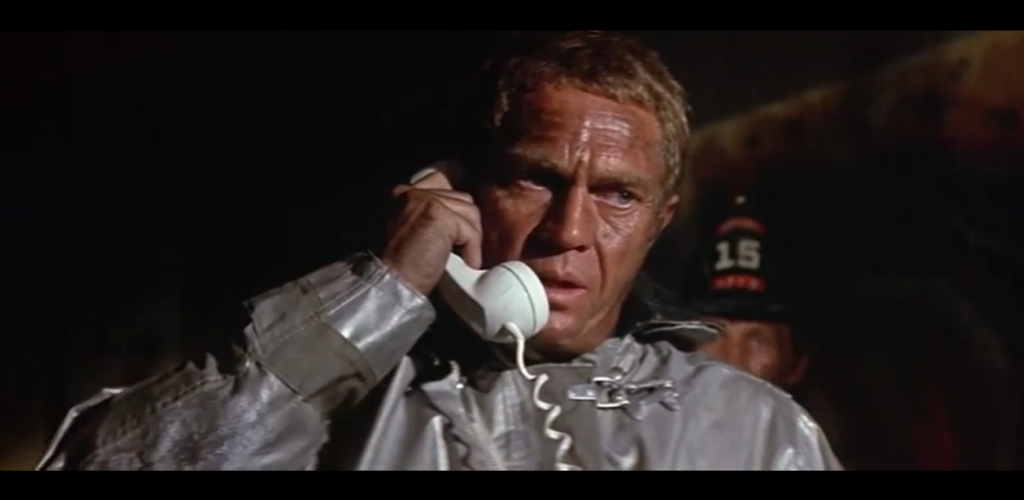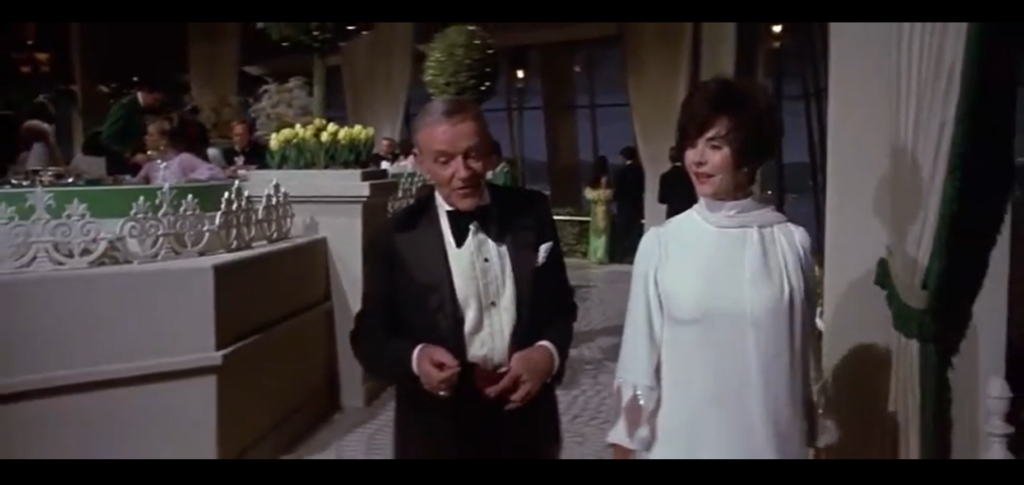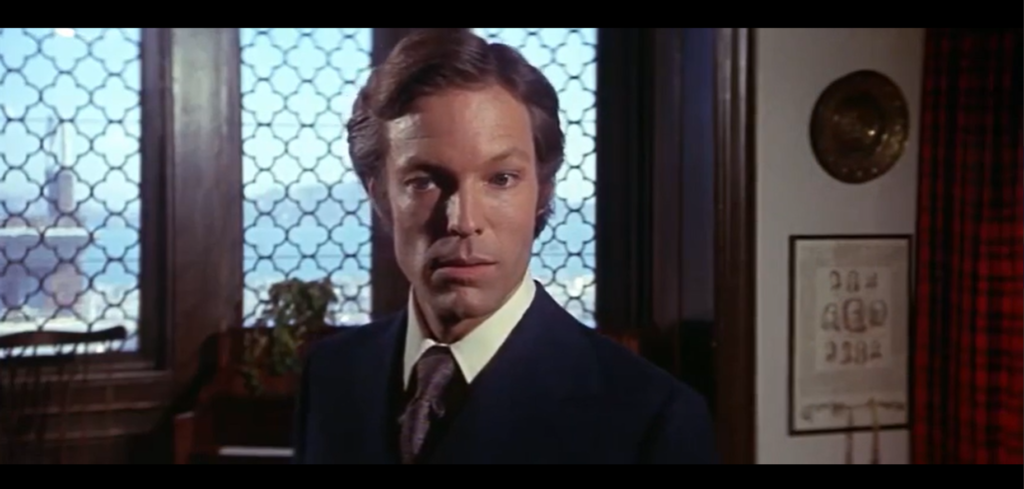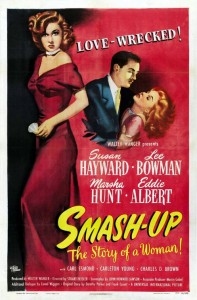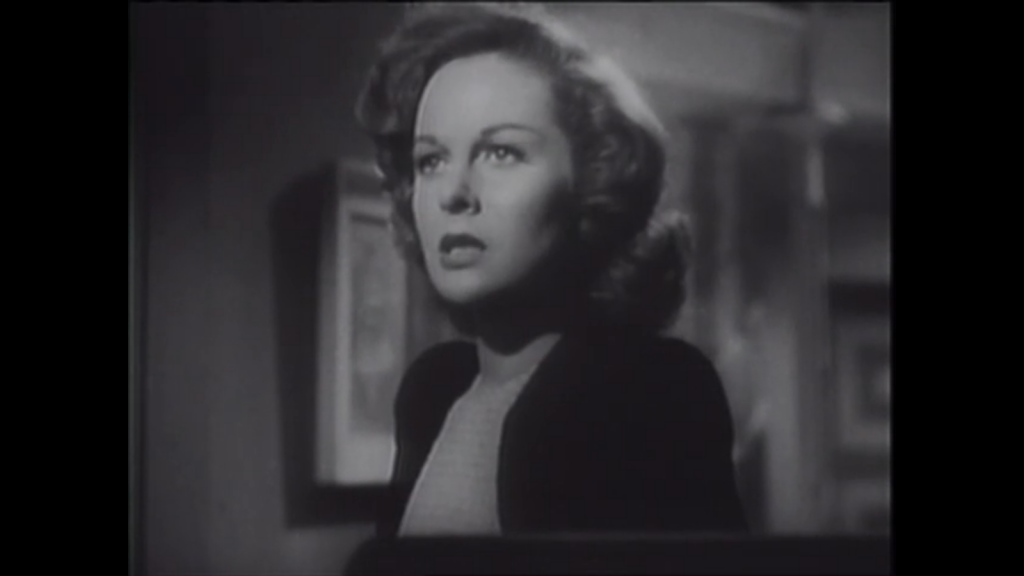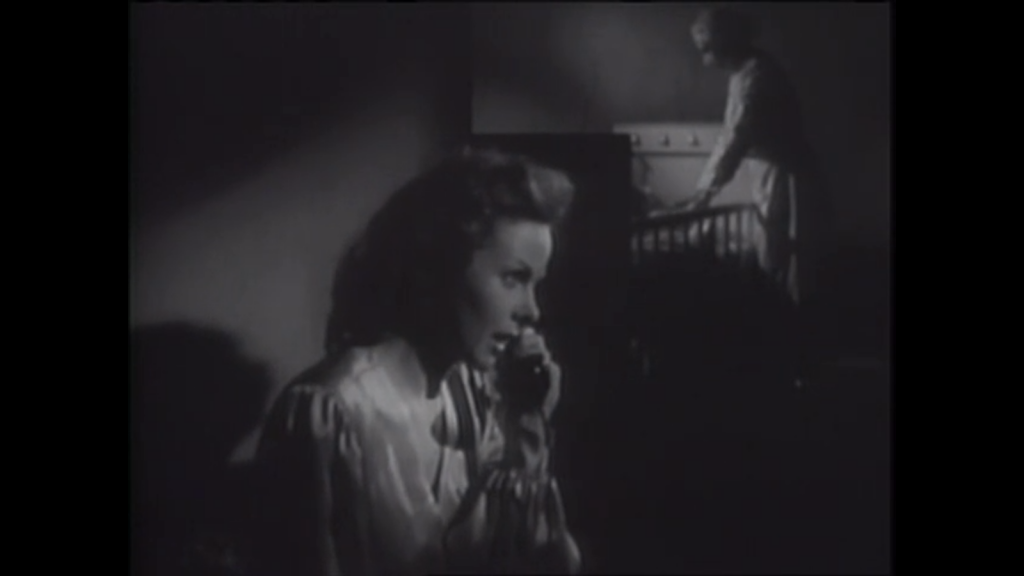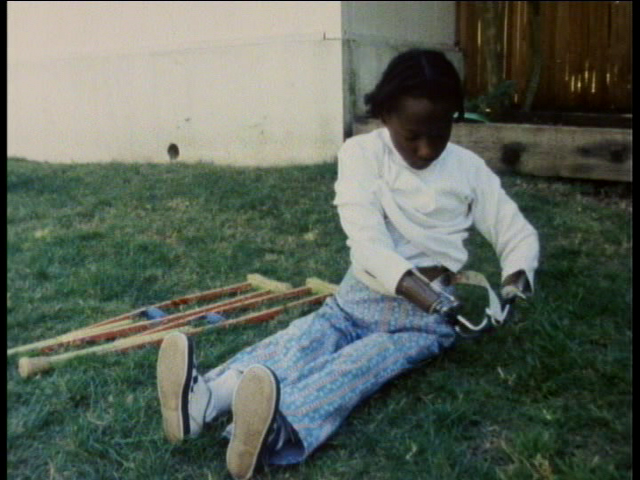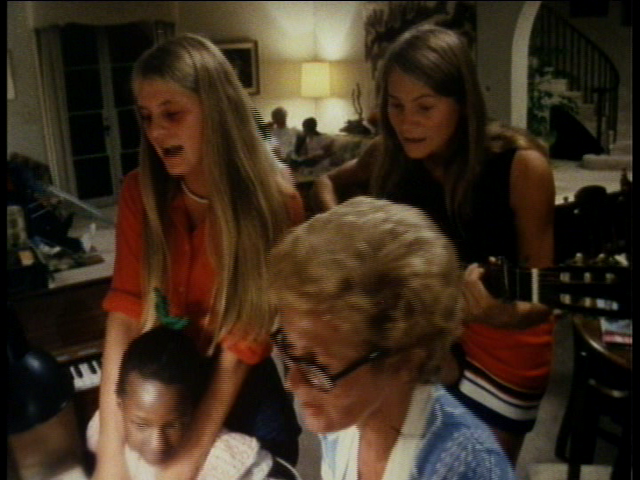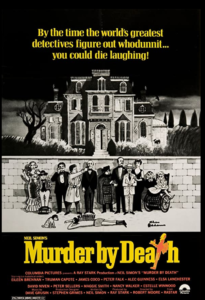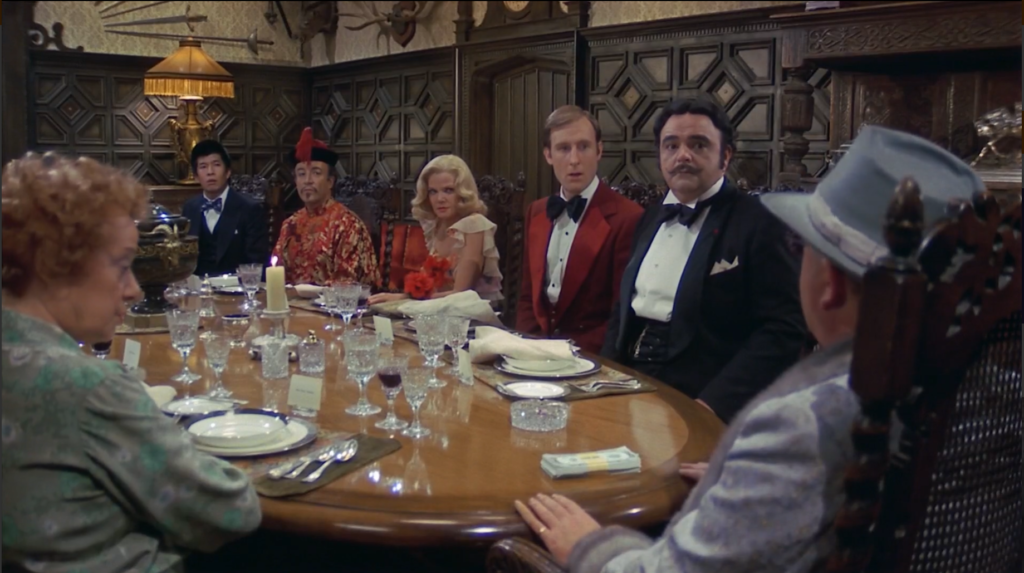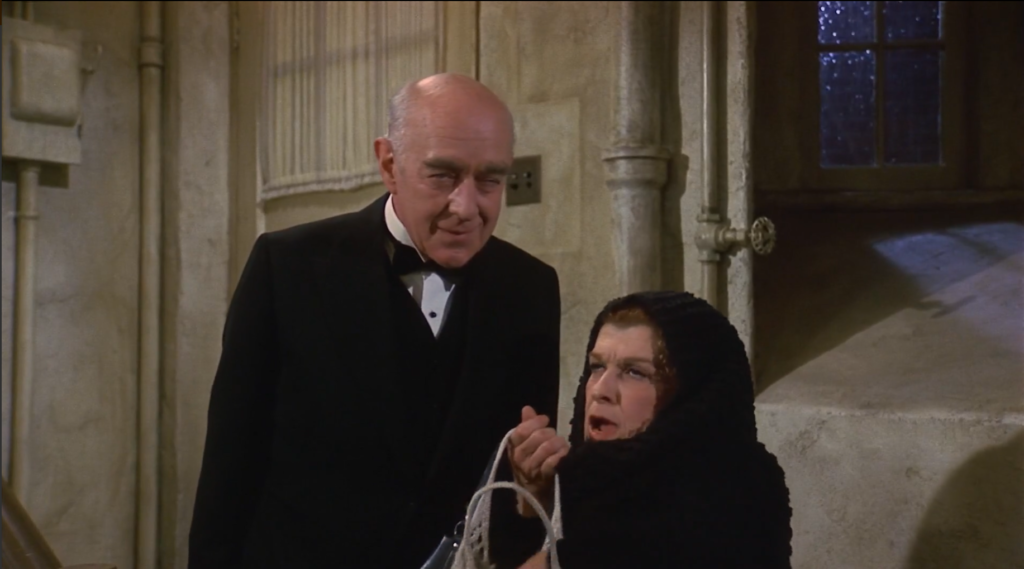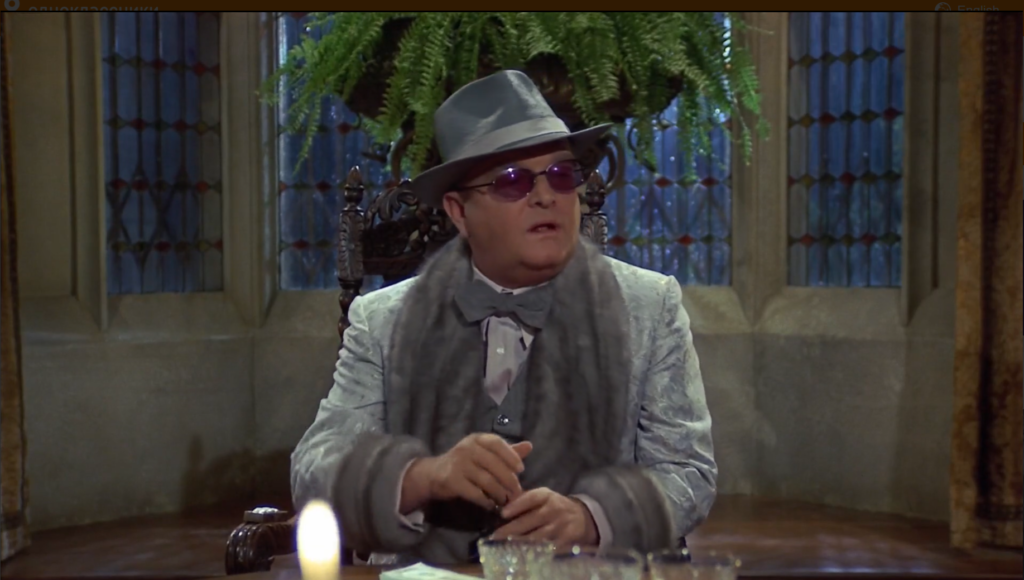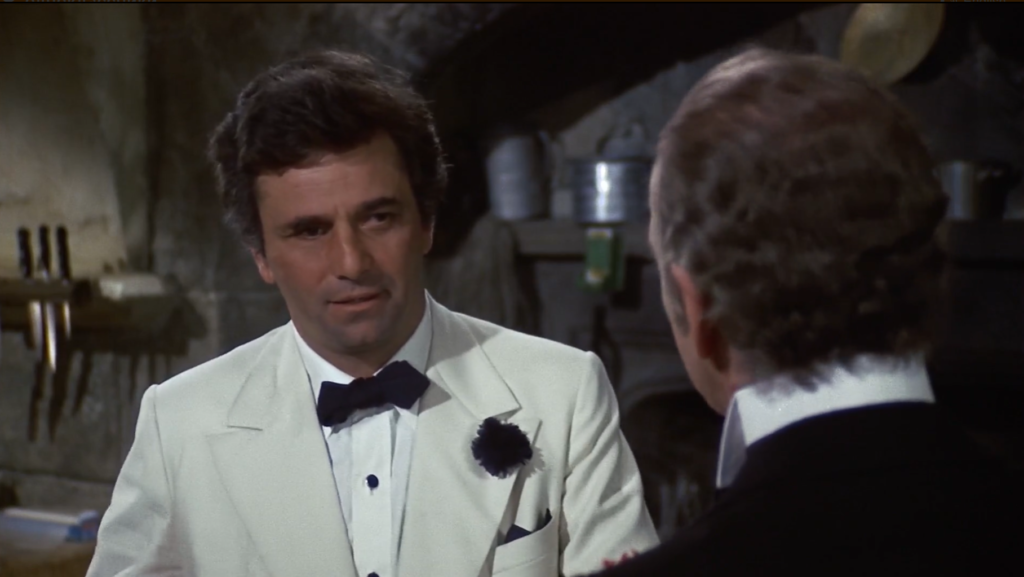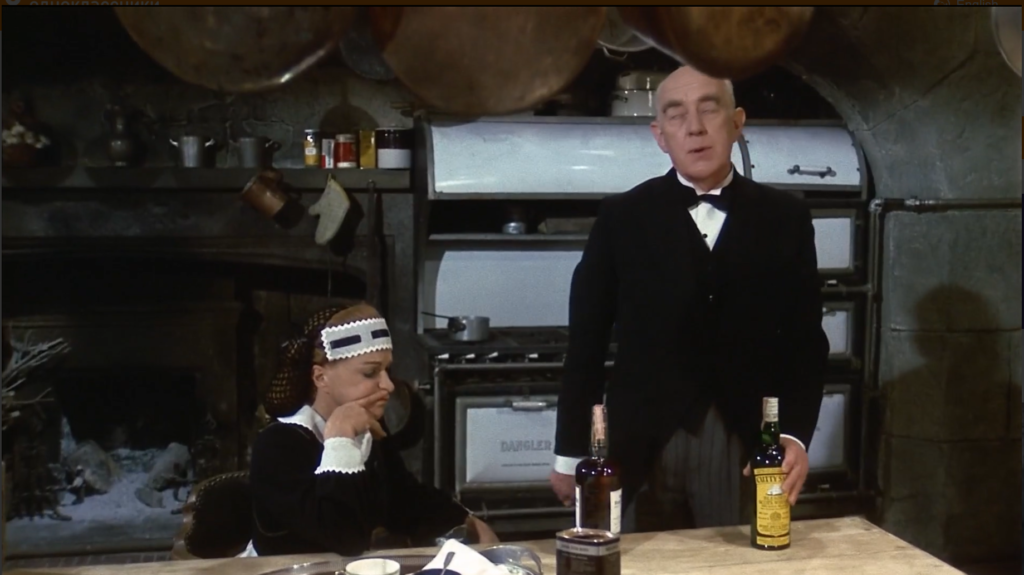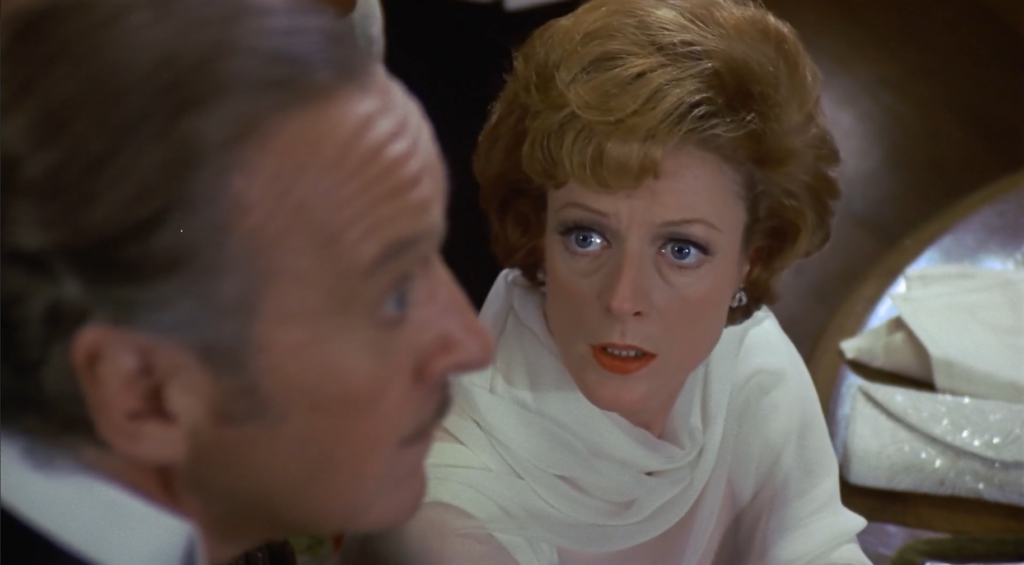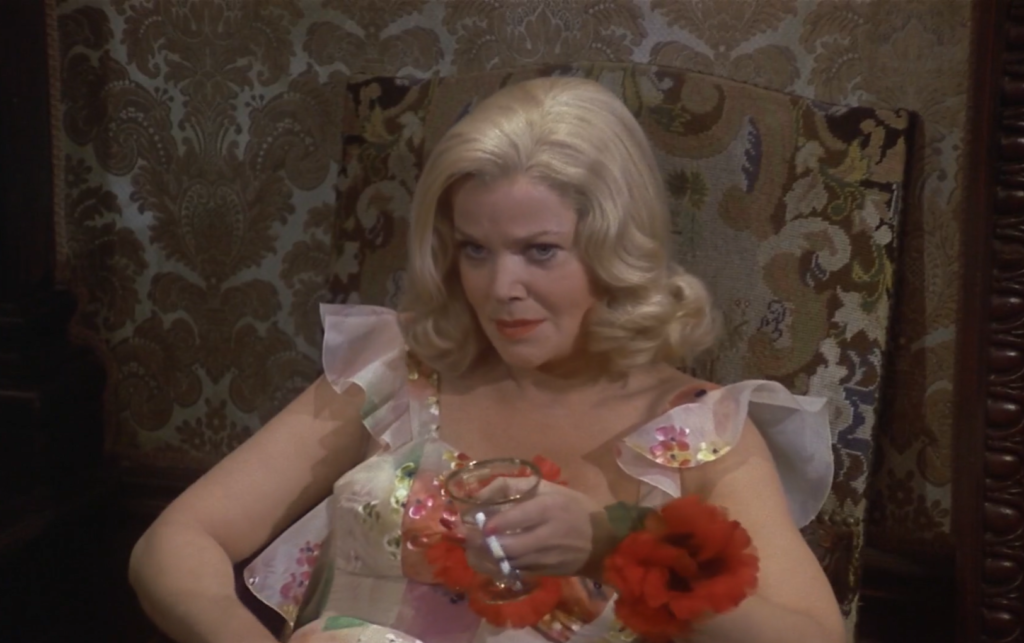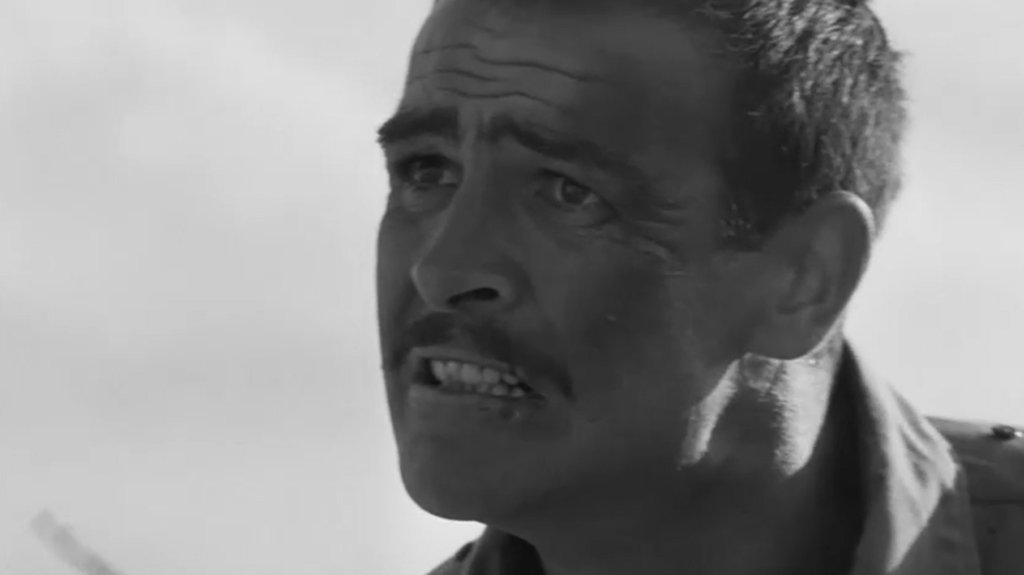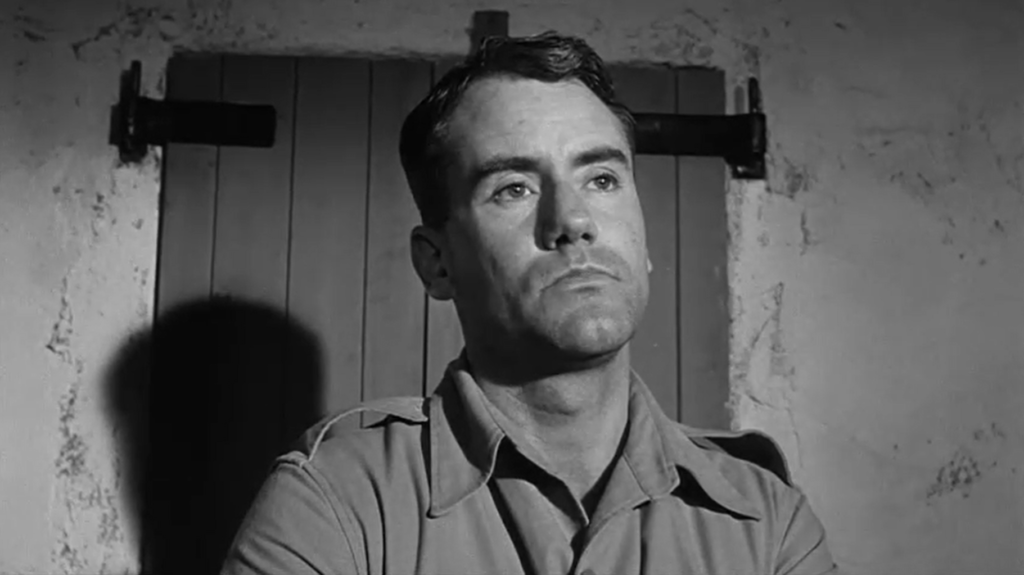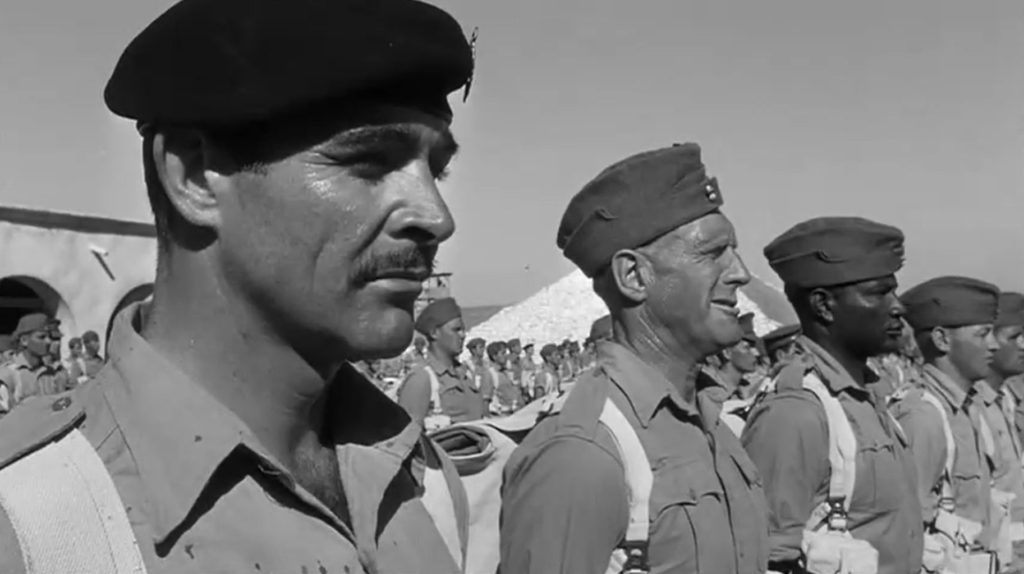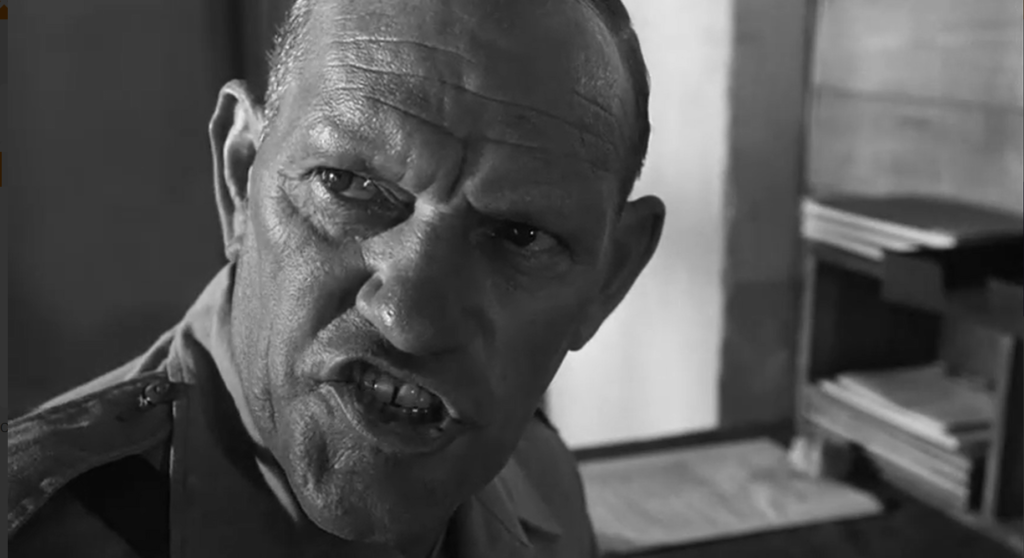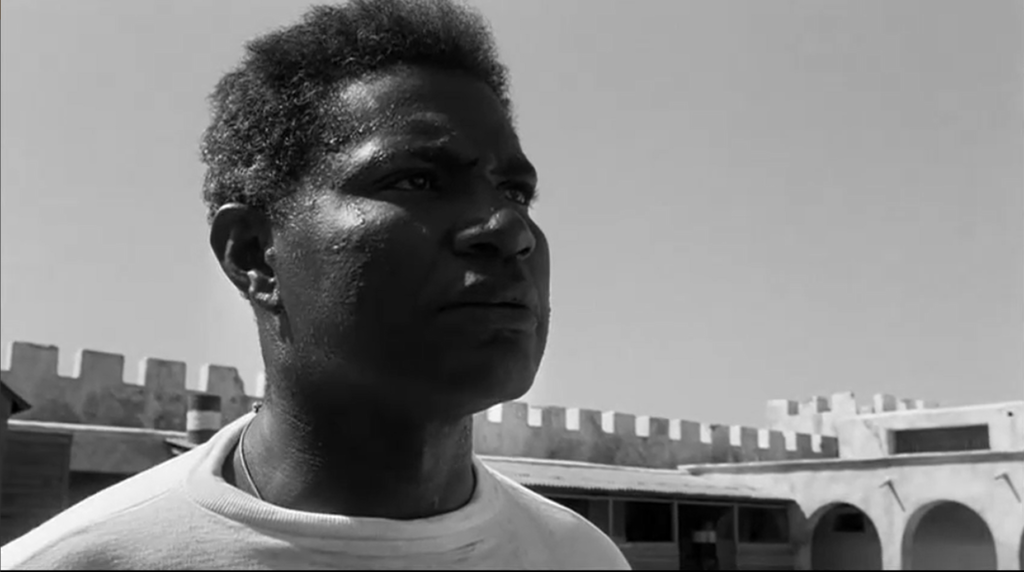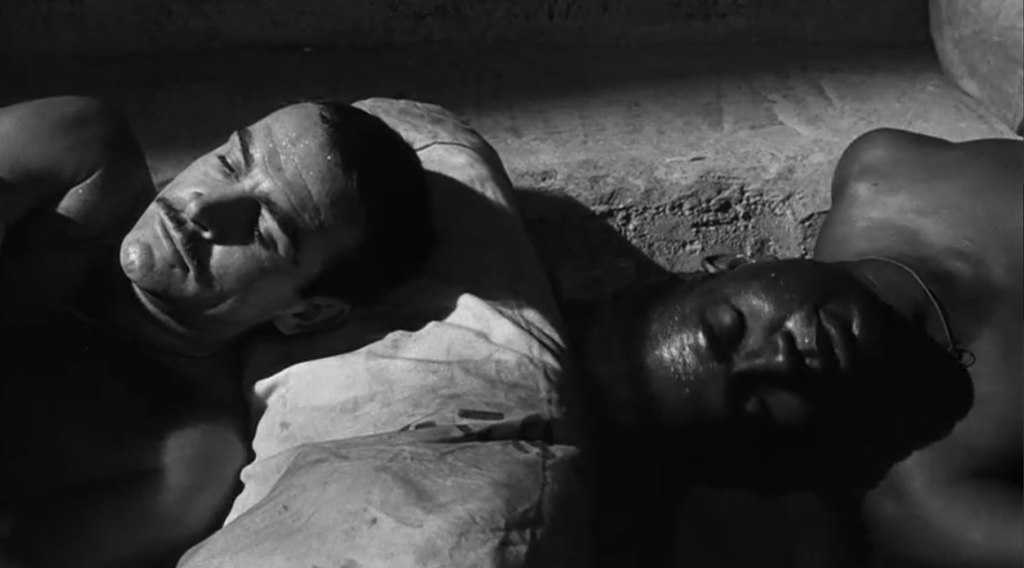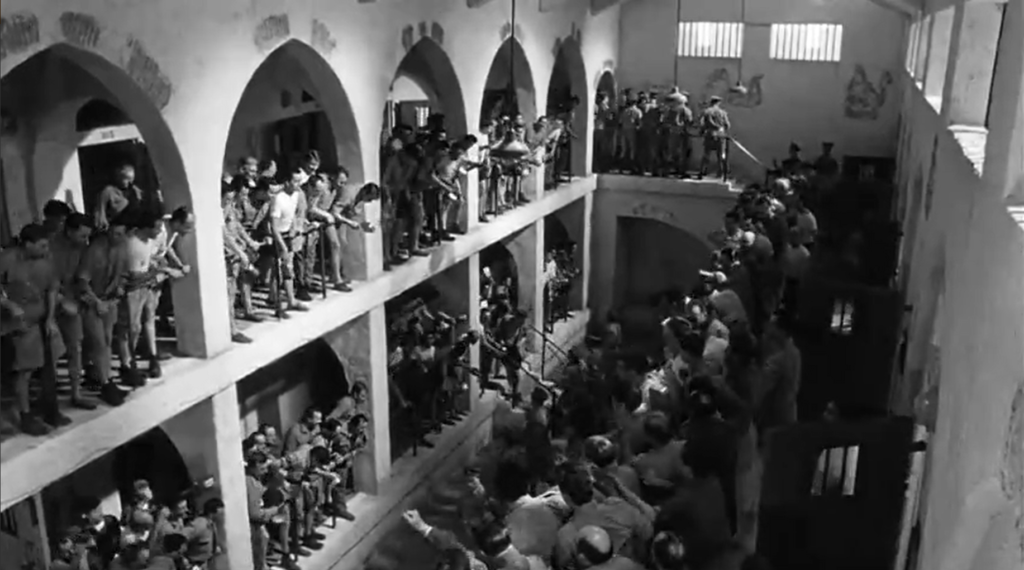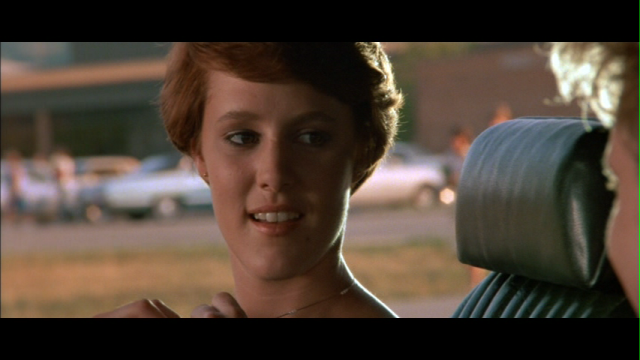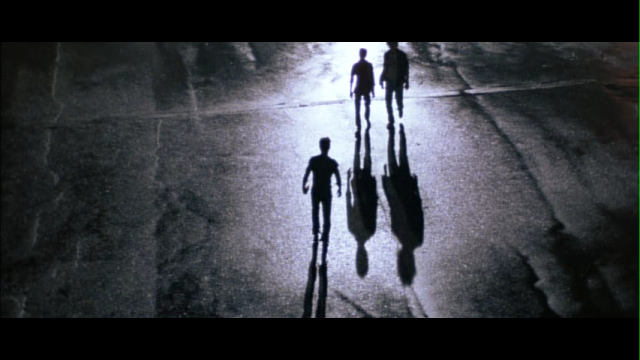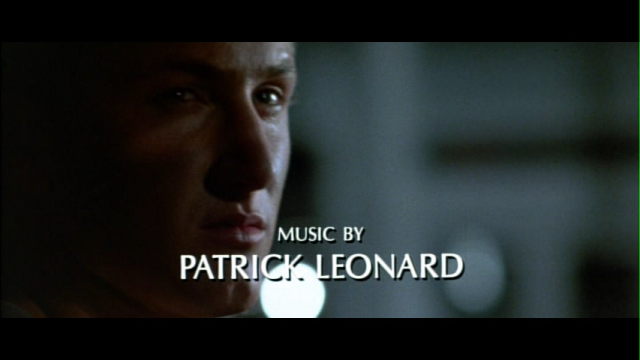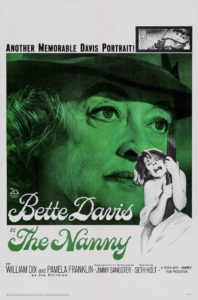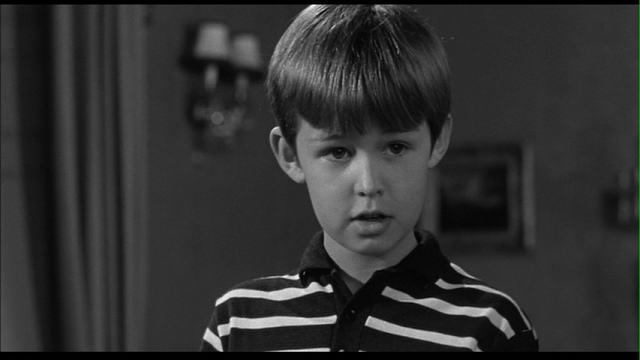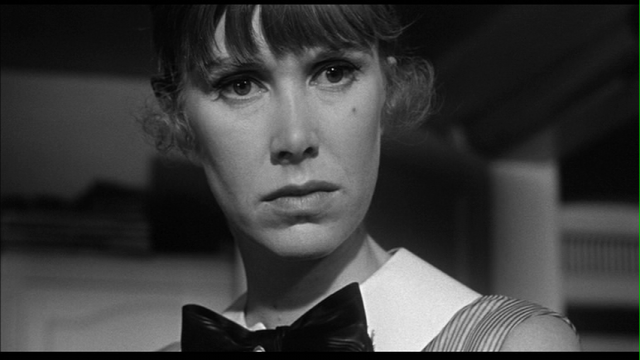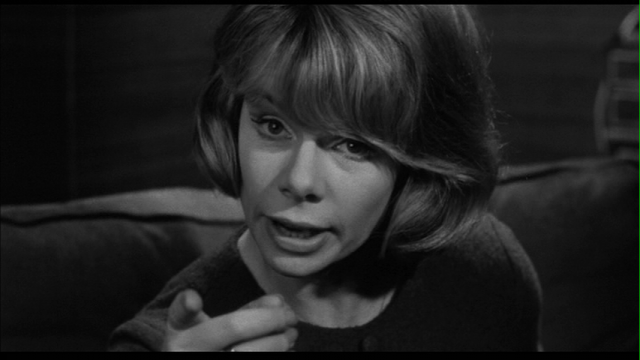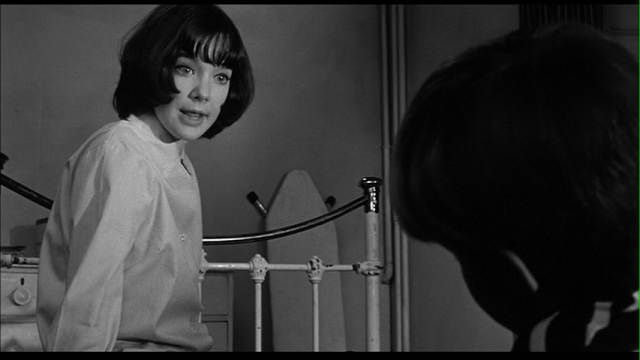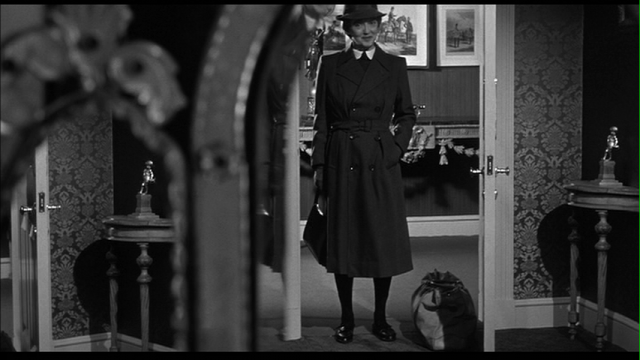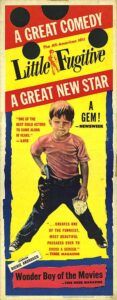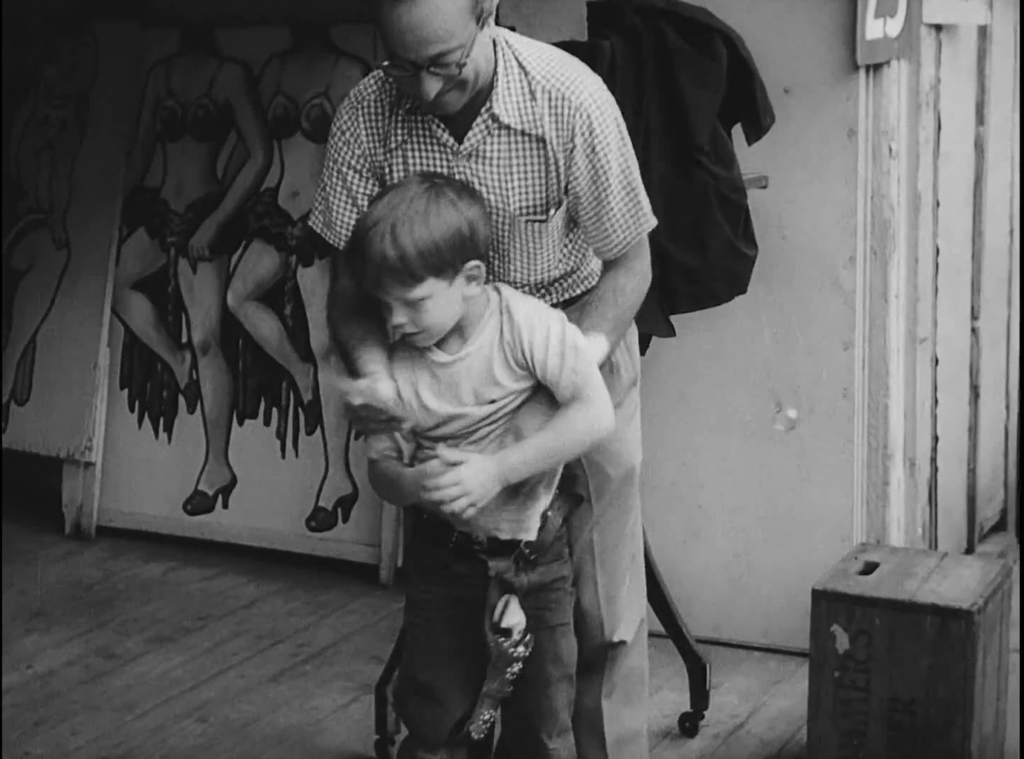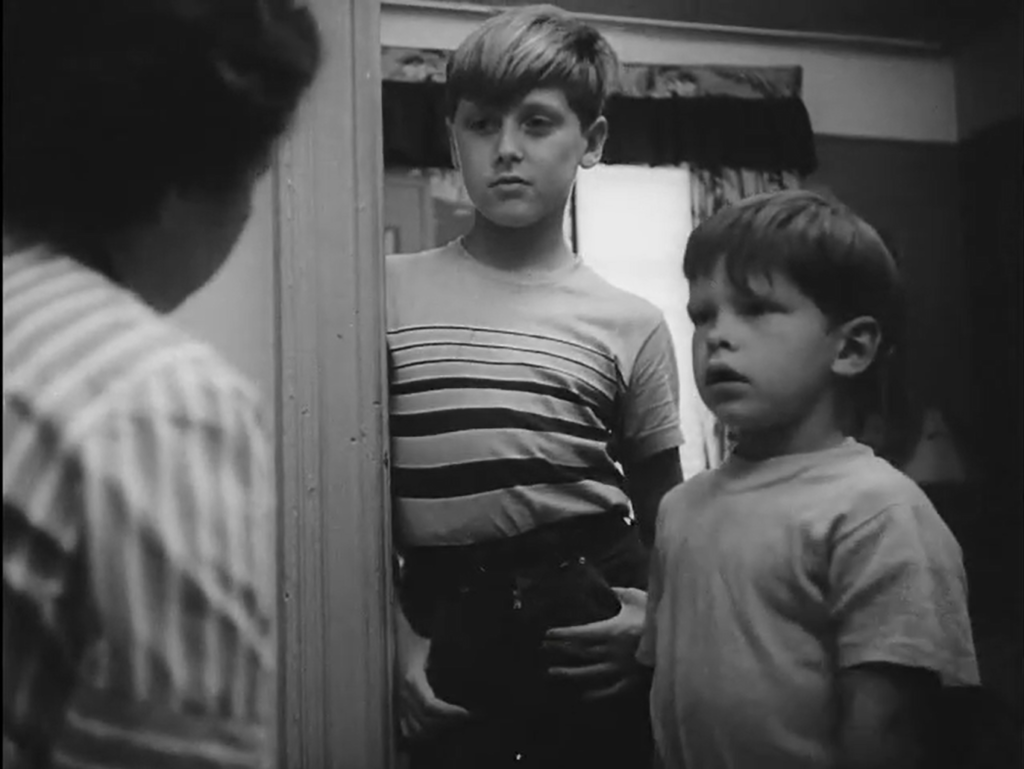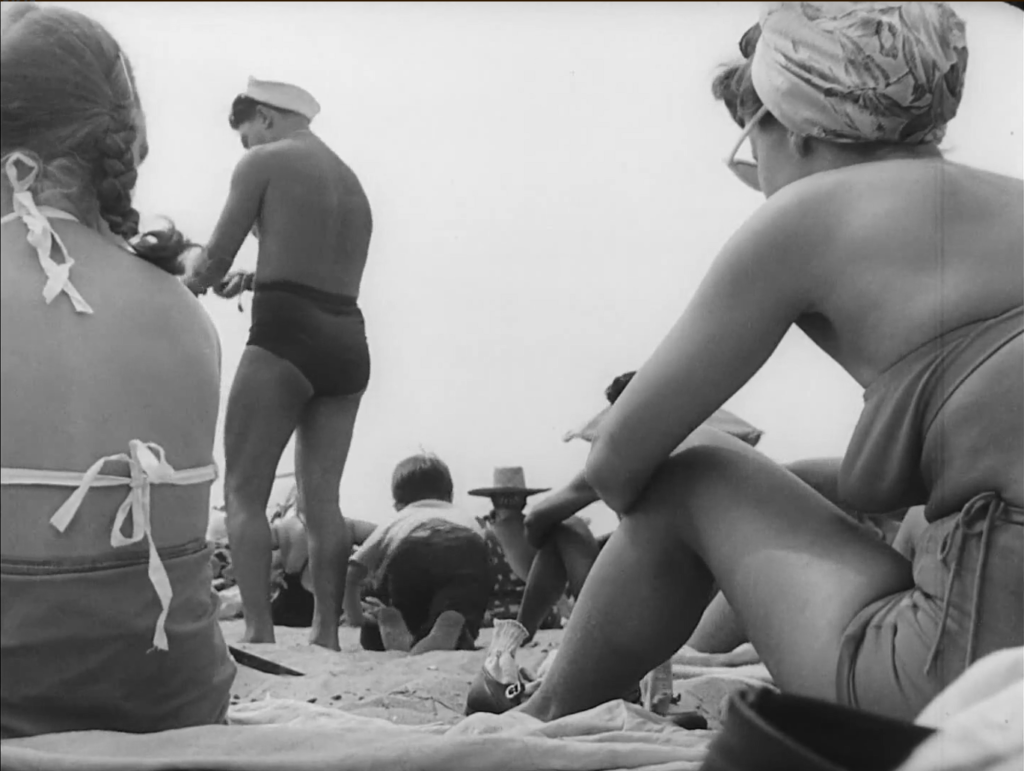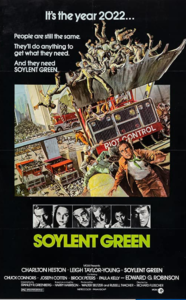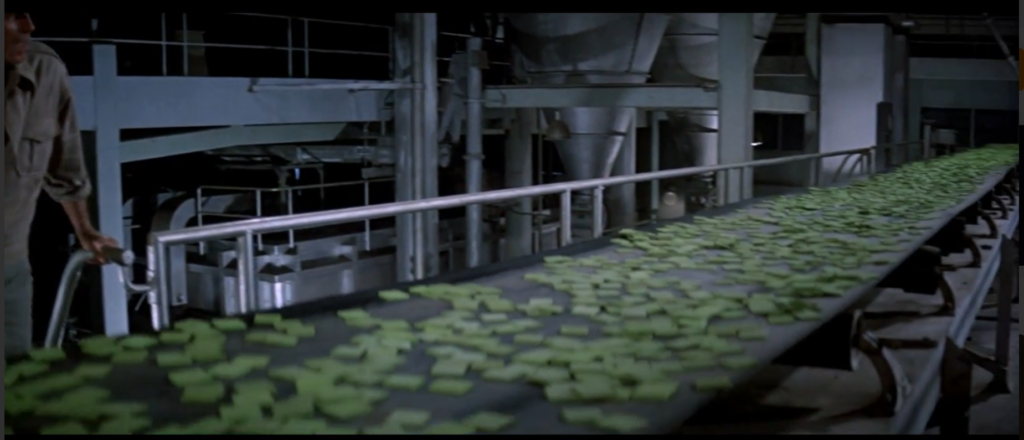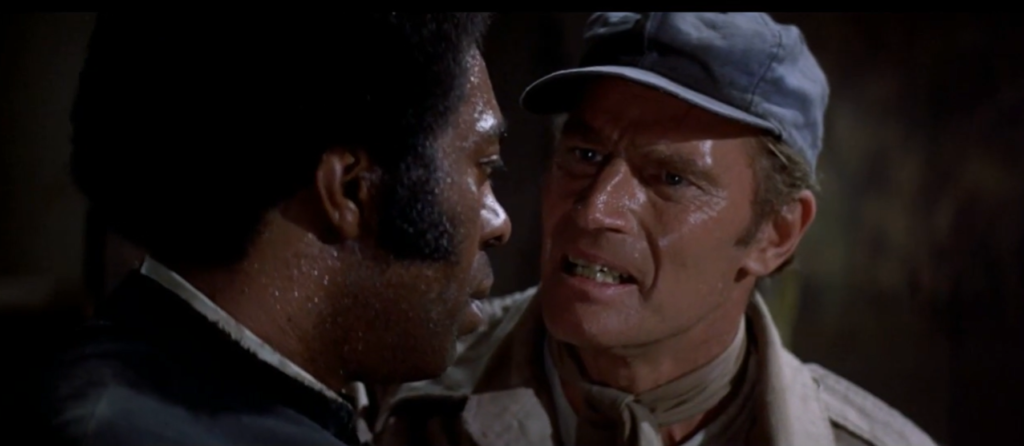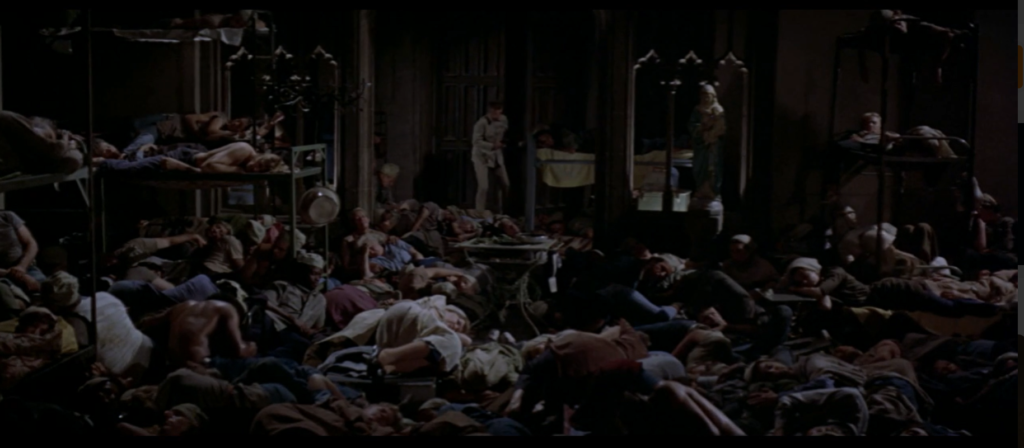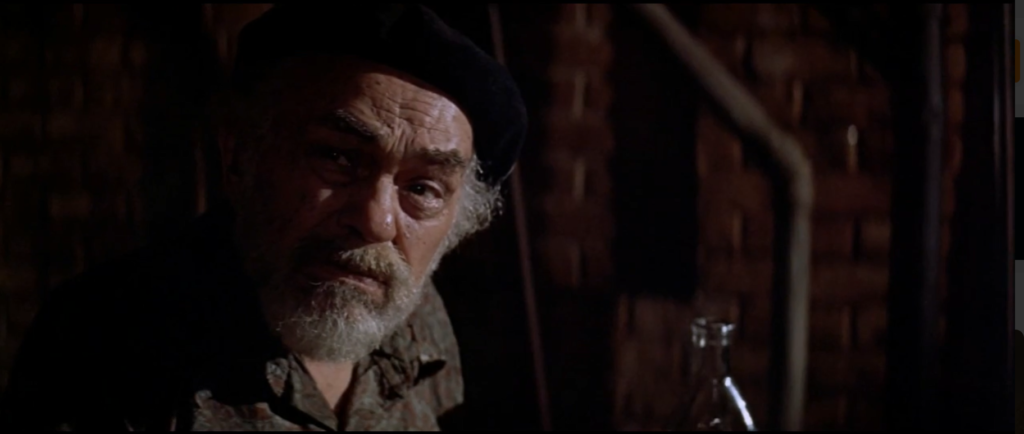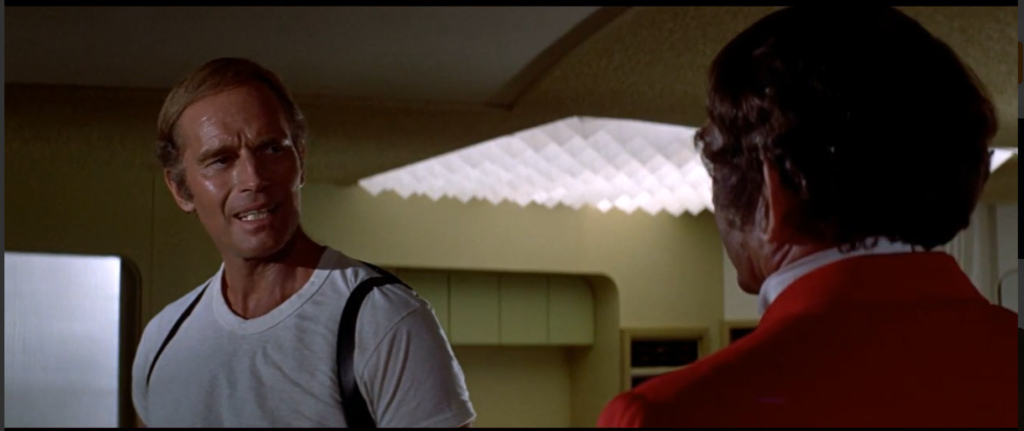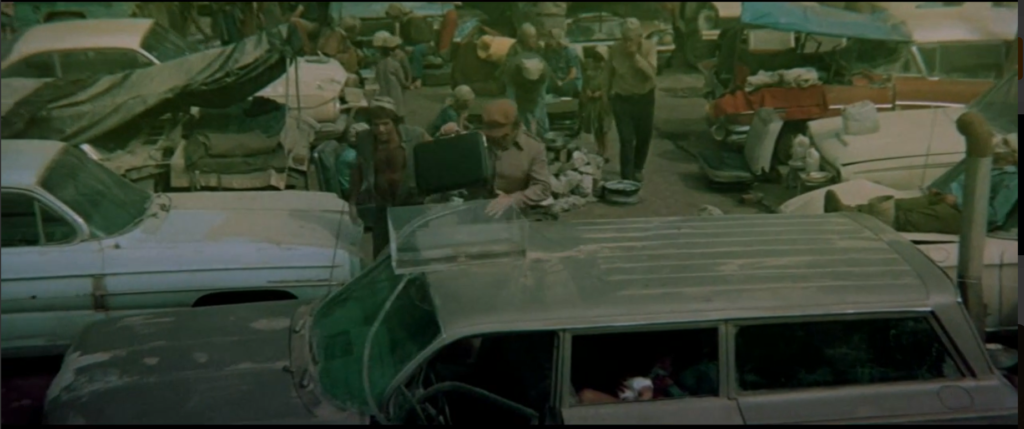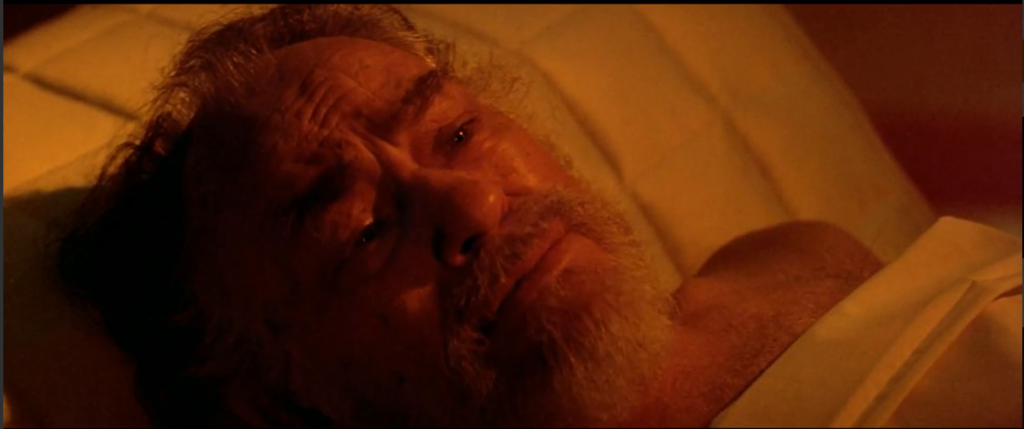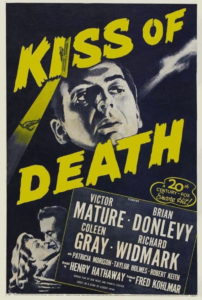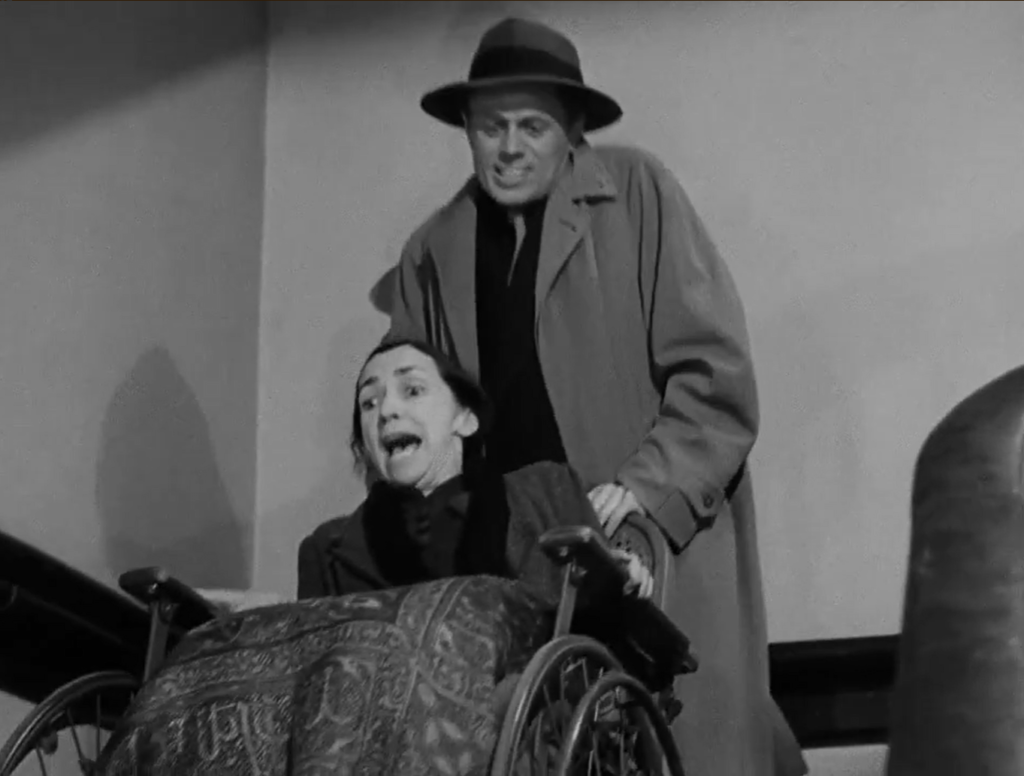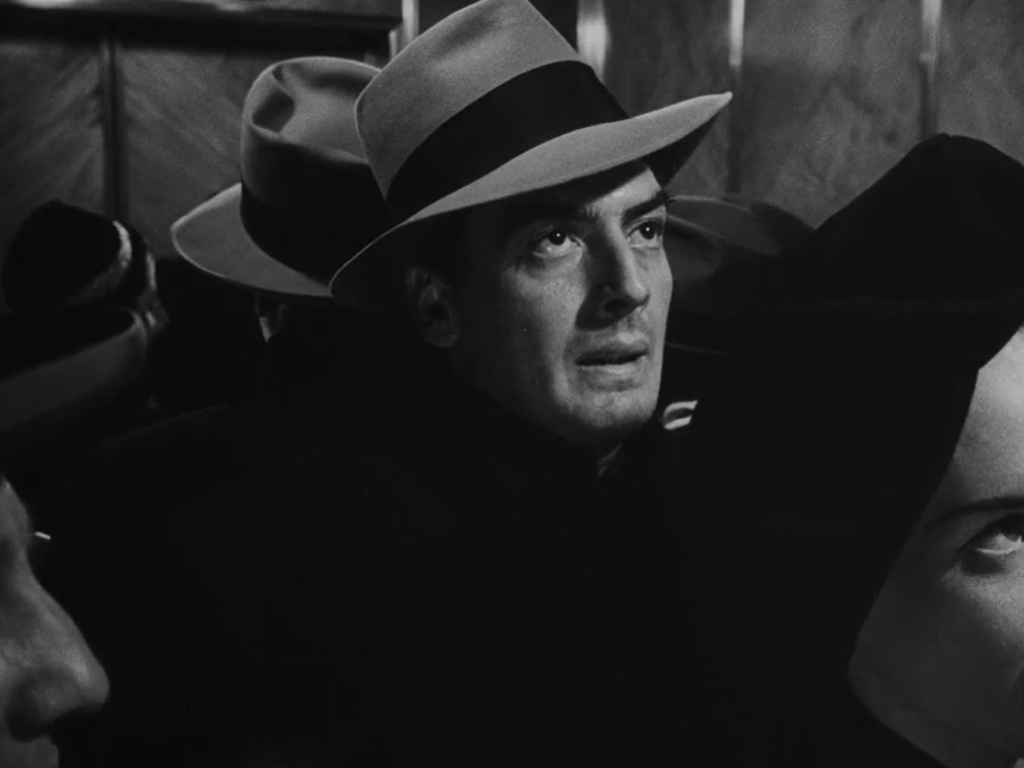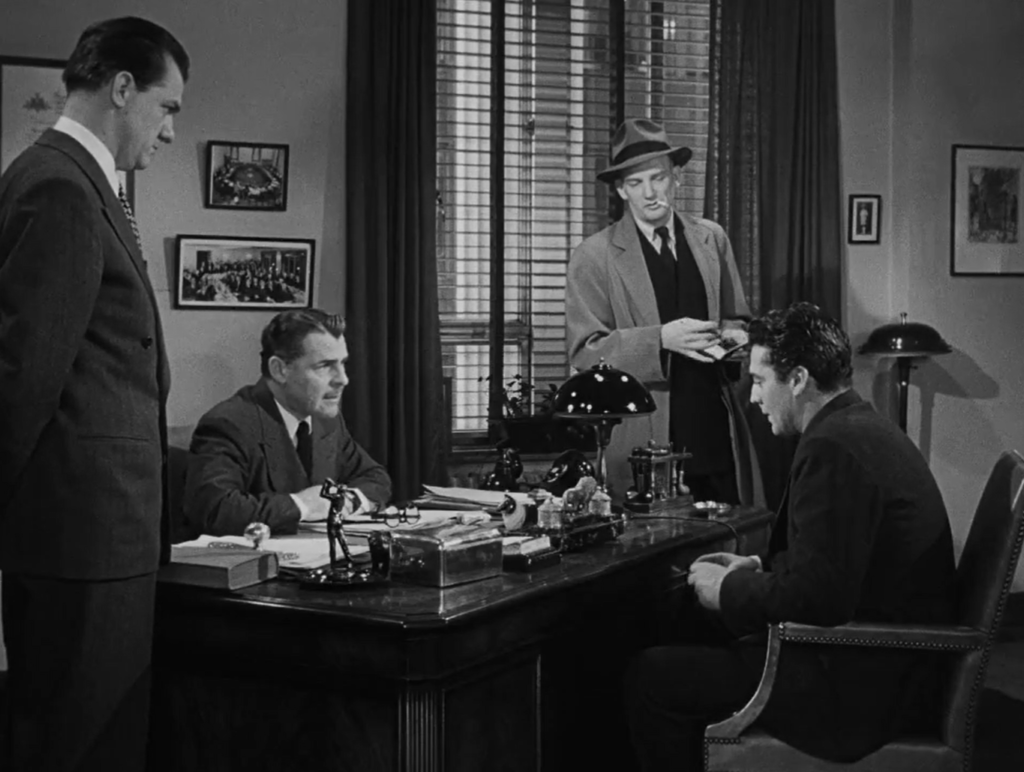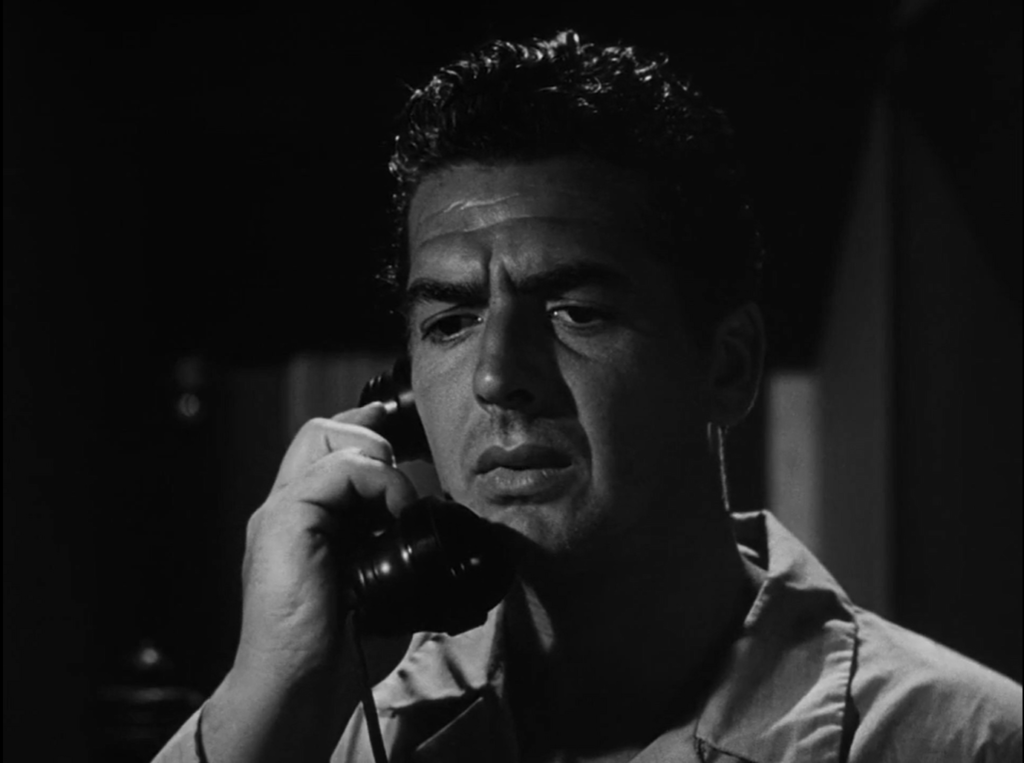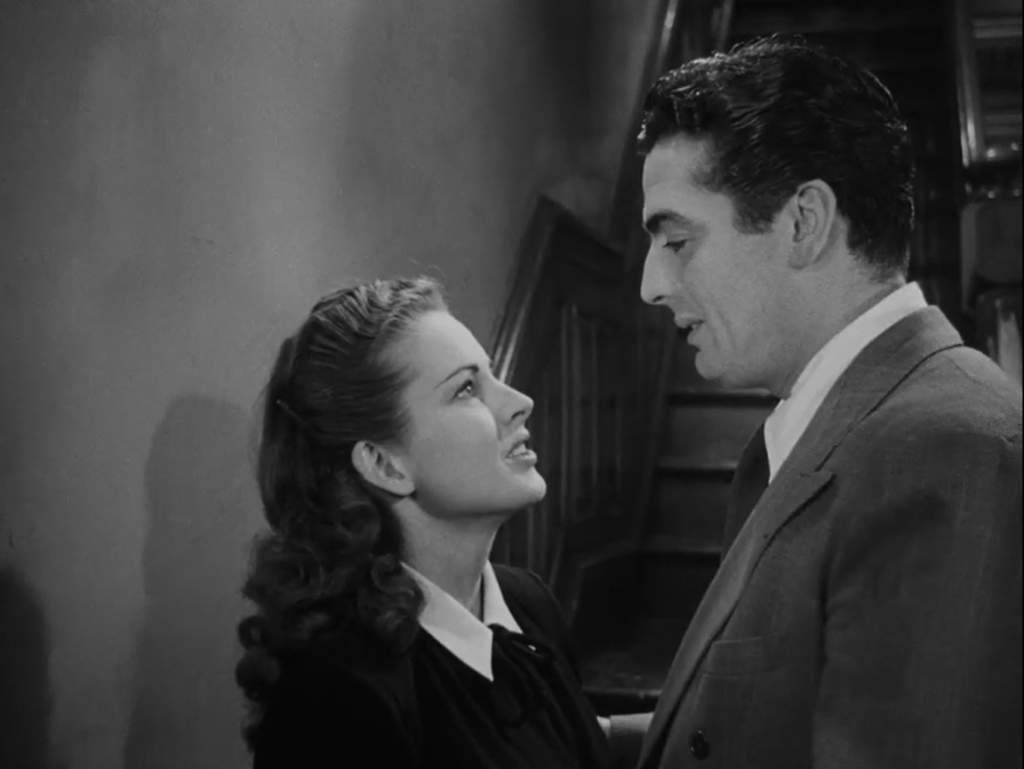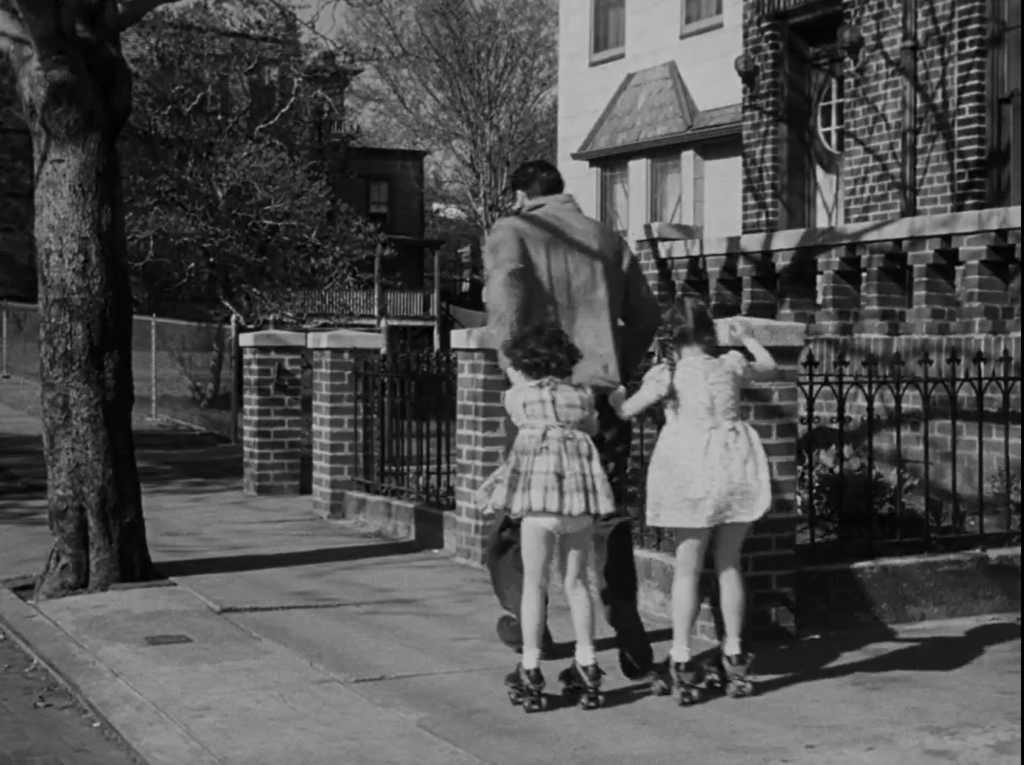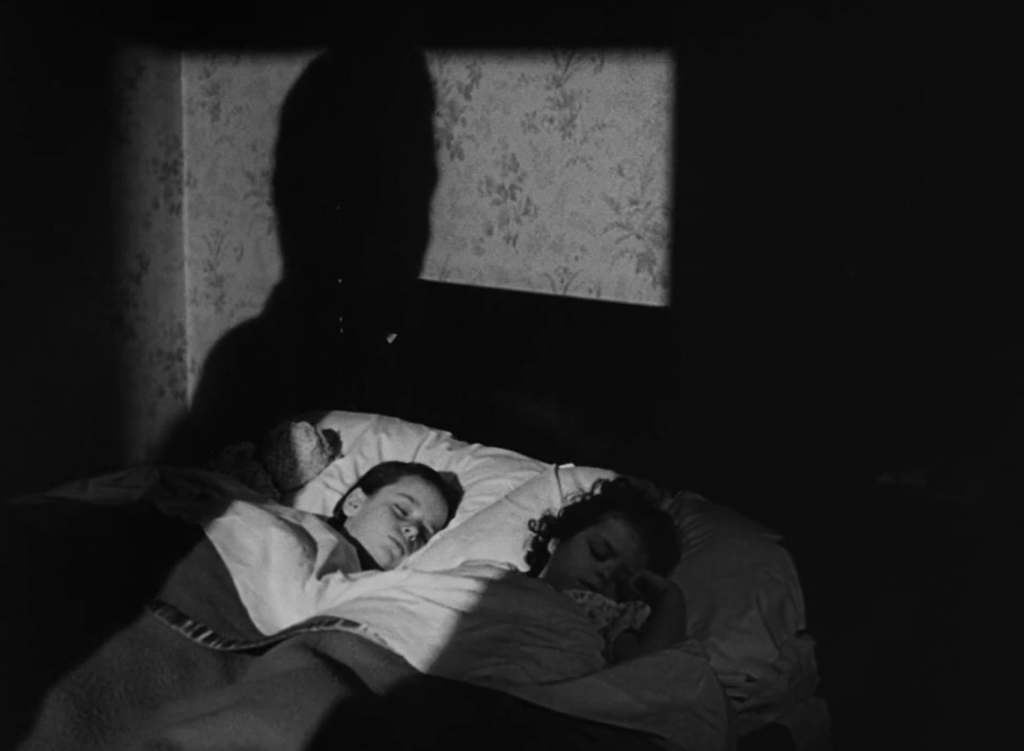Towering Inferno, The (1974)
[Note: The following review is of a non-Peary title; click here to read more.]
“For what it’s worth, architect, this is one building I figured would never burn.”
|
Synopsis: |
|
Genres, Themes, Actors, and Directors:
Review: and several other Big Names (Fred Astaire, Jennifer Jones, William Holden): are given worthy supporting roles. Meanwhile, the film’s very premise — a wealthy playboy (Richard Chamberlain, giving a truly hiss-worthy performance): cuts costs by ordering inferior materials, which ultimately compromise the structure’s integrity — is gripping through-and-through, given how feasible this type of high-level corruption could easily be. Holden’s role — as Chamberlain’s father-in-law, and the building’s financier — is particularly interesting to watch, as he comes to acknowledge his own implicit participation in the eventual manslaughter, and is crushingly humbled. Be forewarned, however, that TTI (as it’s affectionately referred to by its cult fans) really isn’t for the faint of heart. Nice people die throughout this movie — several times, badly, of horrible deaths. Certain images eerily evoke 9/11; the comparison is undeniable. Indeed, if you possess even a shred of fear about dying in a fire one day, stay far, far away from this film, as it presents this possibility in all its visceral horror. Actually, I’m seriously tempted to label TTI a “horror flick”, given the sheer potency of its death scenes, and the way in which Fire is posited as an outrageously powerful Monster, capable of causing unspeakable harm to those in its wake. Be sure to read TCM’s article for plenty of interesting background information about the film’s production (and infamously sticky inter-cast relations) — or go straight to the source and check out this impressive website (19 years old! beware of some dead links…) dedicated exclusively to the film. Redeeming Qualities and Moments: Must See? Categories
Links: |
